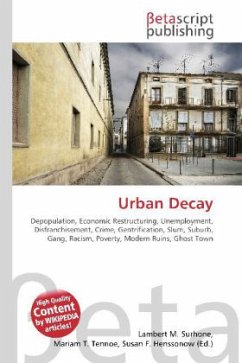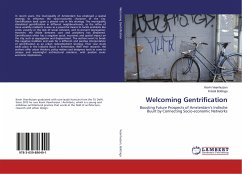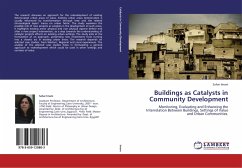Please note that the content of this book primarily consists of articles available from Wikipedia or other free sources online.Urban decay is the sociological process whereby a city, or part of a city, falls into disrepair and decrepitude, with depopulation or changing population, economic restructuring, abandoned buildings, high local unemployment, fragmented families, political disenfranchisement, crime, and a desolate, inhospitable city landscape. Urban decay and gentrification are opposite processes, mirror images of each other. In the 1970s and 1980s, urban decay was associated with Western cities, especially in North America and parts of Europe. During that time, major structural changes in global economies, transportation, and government policy created the economic and then the social conditions resulting in urban decay. The effects counter the development of most of Europe and North America; in countries beyond, urban decay is manifest in the peripheral slums at the outskirts of a metropolis, while the city center and the inner city retain high real estate values and sustain a steadily increasing populace.
Bitte wählen Sie Ihr Anliegen aus.
Rechnungen
Retourenschein anfordern
Bestellstatus
Storno








